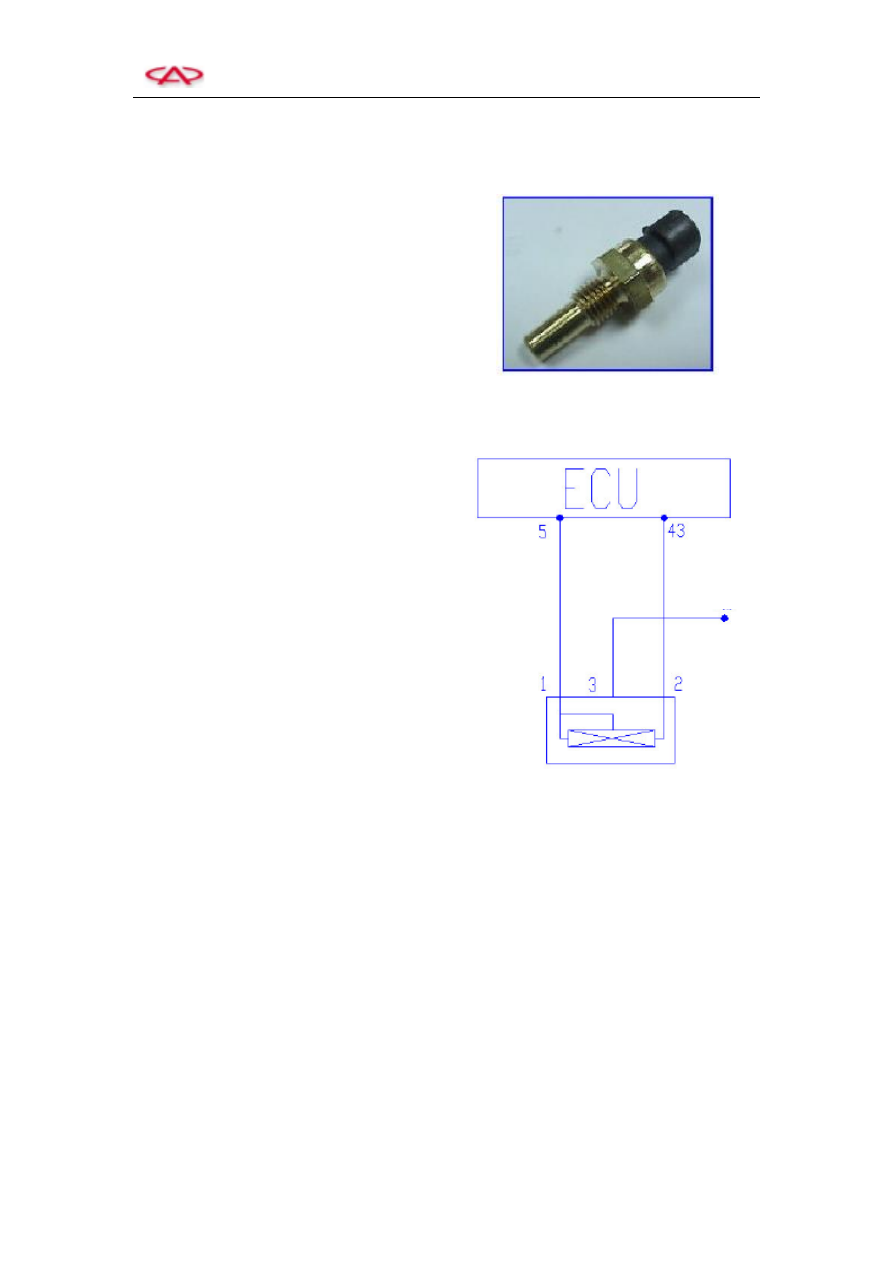Chery Tiggo T11 LHD. Manual - part 48

Chery T11 Service Manual Electric Injection System
5
3. Coolant Temperature Sensor (THW, CTS)
Application: This sensor is used to provide the
information about the coolant’s temperature. It
can offer an engine’s ECU the water
temperature signal which is available to control
the startup, idle, ignition timing during the
normal operation, and fuel injection pulse width.
At the same time, it also offers instruments the
water temperature signal which is applied for
the
water
temperature
display
of
the
instruments. The water temperature signal is the
most signal for the cold start of the engine.
During the period of cold start, the fuel
injection quantity depends on the signal proved
by the water temperature sensor.
Structure and Principle: This sensor is a
thermistor with negative temperature coefficient
(NTC), whose resistance reduces as the coolant
temperature rises, and increases as the coolant
temperature drops, but it isn’t linear. Based on
the output signal from the sensor, the ECU
monitors the change of water temperature
through its internal comparison circuit.
Trouble Diagnosis:
1) The water temperature signal is higher than
the limit value;
2) The water temperature signal is lower than
the limit value;
3) The open or short circuits of the water
temperature sensor.
Resistance value data at normal temperature:
2.5±5%KΩ
Installation Hint: The max. tightening torque is
20 Nm.
Hint: This vehicle is equipped with the
three-wire water temperature sensor. This kind
of sensor features with the cost-effective and the
system consistency.
Profile of a coolant temperature sensor
T11 Water Temperature Sensor
Circuit diagram of coolant temperature sensor
Pin:
This sensor has three pins in total, which can be
exchanged each other.
1) No1 (A) for the sensor grounding wire (to
Ecu 5#);
2) No 2 (B) for the water temperature sensor
signal wire (to ECU 43#);
3) No 2 (C) for the water temperature gauge of
the instruments;
To instrument